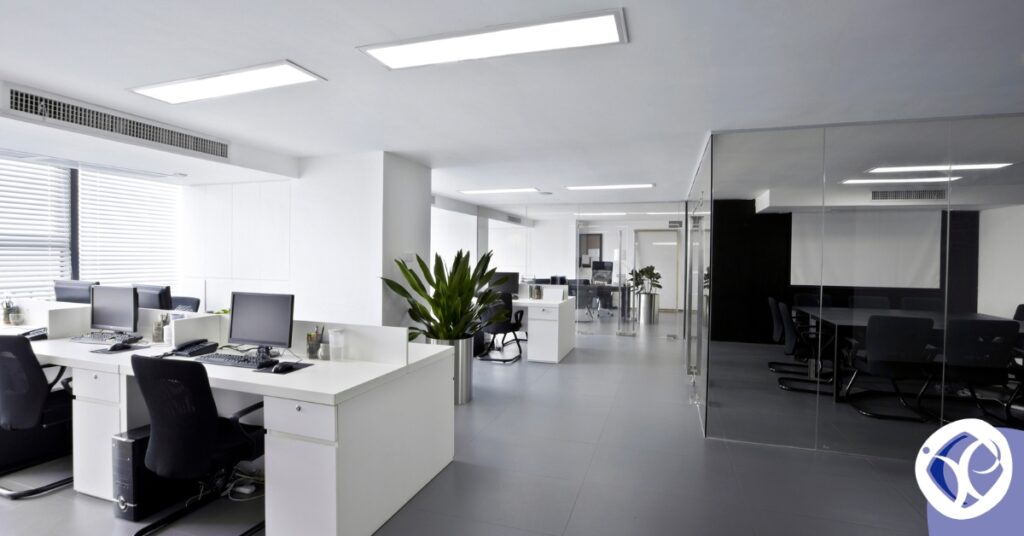The fixtures and fittings within your office, Furnished Holiday Let or commercial property may provide you with invaluable savings that could be used to grow your business. On today’s Tax Tip, find out how to claim capital allowances on fixtures and fittings.

(4-minute read)
We will cover:
- What are fixtures and fittings, plant and machinery and integral features
- How to claim Capital Allowances
The Benefits of Claiming Capital Allowance on Fixtures and Fittings
Did you know that many businesses in the UK are missing out on valuable tax relief by failing to claim capital allowances on fixtures and fittings?
You can reduce your tax bill and get more cash by understanding the rules for capital allowances and keeping a detailed record of your expenses.
Capital allowances are given to businesses that buy assets like equipment or property.
This means businesses can deduct some of the cost from their tax bill.
This includes a wide range of assets, such as fixtures and fittings, which are integral to the operation of a business.
In this blog post, we’ll explore how fixtures and fittings can help businesses get tax breaks, and what they need to do to claim this relief.
What are Fixtures and Fittings?
Fixtures and fittings are assets that are fixed to a building or property and can’t be moved.
These assets can include things like air conditioning, heating, lights, and security systems.
You can’t usually move them around, so they become an important part of the building or property.
In the context of capital allowances, fixtures and fittings are considered to be a type of ‘plant and machinery’.
Qualifying for Capital Allowances
In order to qualify for capital allowances, businesses must meet certain criteria.
First and foremost, the asset must be used exclusively for the purpose of the business.
As mentioned above, the assets must be fixed or installed in a building or property, and must be considered to be part of the building or property itself.
The asset also must…
- be used to generate income either directly or indirectly
- be owned by the business or leased on a long-term basis
- last longer than one year
- be used for a minimum period of time before qualifying for capital allowances.
Claiming Capital Allowances
In order to claim capital allowances, businesses must ensure that they have all of the necessary documents and records in place.
This includes things such as:
- invoices
- receipts
- any other records that demonstrate that the asset has been purchased and is used for the purpose of the business
What are the different rates?
There are two types of fixtures and fittings that can qualify for capital allowances: integral features and plant and machinery.
Integral features are things like electrical systems, cold water systems, and heating systems.
These assets are considered to be integral to the building or property and are eligible for capital allowances at a rate of 8%.
Plant and machinery, on the other hand, includes assets such as air conditioning units, lighting, and security systems.
These assets are eligible for capital allowances at a rate of 18%.
The rates also depend on:
- type of purchaser
- date of purchase
- proposed use
Check Whether You Can Claim
If you’re buying or selling a commercial property or block of flats, it’s important to check if the previous owner has already claimed allowances for fixtures.
As the new owner of the building, you may be able to claim any unclaimed allowances, provided you can establish the history of previous claims.
You can reduce your tax bill and improve your cash flow by understanding the rates of allowances and making sure you’ve claimed everything you’re entitled to.
How to Claim Capital Allowances on Fixtures and Fittings
In order to claim capital allowances on fixtures and fittings, businesses must keep detailed records of all the assets they purchase and install.
These records should include the date of purchase, the cost of the asset, and any other relevant details.
Businesses must then calculate the value of the fixtures and fittings that qualify for capital allowances and claim this amount on their tax return.
It is important to note that businesses must claim capital allowances within two years of the end of the accounting period in which the assets were purchased.
Failure to claim capital allowances within this timeframe can result in the loss of the tax relief.
Conclusion
In conclusion, capital allowances are a valuable tax relief relief that can allow businesses to grow and succeed.
Fixtures and fittings are assets that can qualify for capital allowances, provided they meet certain criteria.
Claiming capital allowances on your fixtures and fittings can be a game-changer for your business, allowing you to reinvest the savings back into your operations.
Imagine the peace of mind and financial stability that comes with reducing your tax liability and freeing up valuable resources for your business!
Don’t miss out on this opportunity to reach your full potential.
Contact us today at 01772 788200 to find out more about how we can help, or WhatsApp us out-of-hours at 07787 010190.
Sending an e-mail is simple too, just fill out this short form and we’ll get back to you!
Kind regards Ilyas
